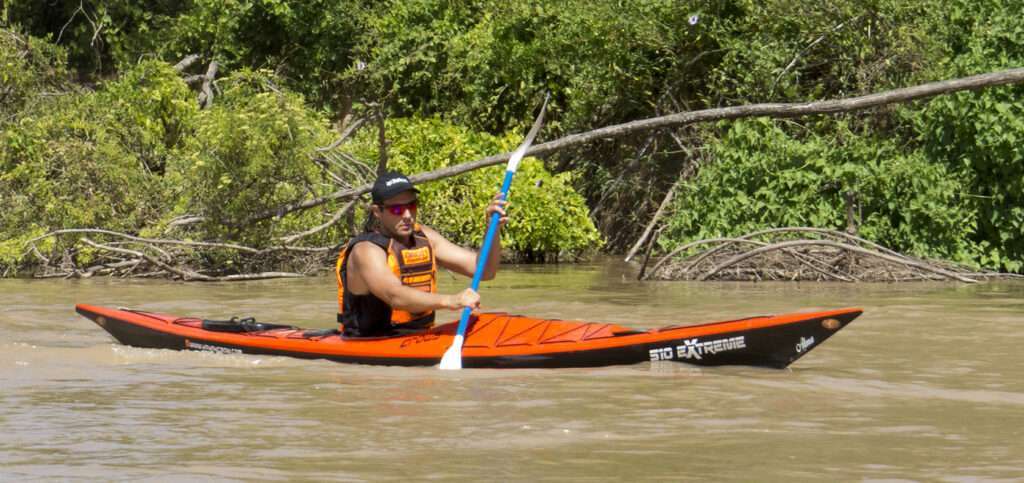The kayak manuever known as the forward stroke is a relatively easy technique to master. That being said, it is also one of the most commonly distorted strokes in kayaking. This “How To” will guide you through the steps that every kayaker should know for maximum propulsion across the water as well as the proper ergonomic technique for wrist, shoulder, and torso safety. These directions are written assuming a right-handed paddler. If you are a “lefty” simply reverse the directions.
Difficulty: Average
Time Required: 15 minutes to get the hang of it
Here’s How:
- Hold the Paddle Properly:
The forward stroke can only be executed safely and properly as long as you are holding your paddle properly. Your hands should be about shoulder width apart, the paddle should be facing the right direction and oriented properly. - Maintain Proper Posture in the Kayak
You should maintain an aggressive, yet comfortable, position in the kayak. Sit upright or ever-so-slightly forward with your legs securely in the thigh braces and the balls of your feet against the foot supports. Make sure the backrest is adjusted to support you in the kayak in this position. - Rotate Your Body
To take a stroke on the right side, rotate your torso counter-clockwise so that the right paddle blade is forward. Be sure to maintain the paddler’s box. This is the step that is often performed incorrectly. The key to it is the torso rotation not arm motion. - Place the Paddle in the Water: The Catch Phase
Place the forward paddle blade in the water near the feet and toward the “tip” of the kayak. The blade should be inserted into the water with little disturbance. The face of the blade should be perpendicular to the direction of pull. - Take the Stroke: The Power Phase
With the blade in the water, rotate the torso so as to pull the blade through the water along side of the boat. Keep the top hand level throughout the rotation at about eye level. Again, the stroke is powered by the rotation of the torso and not by pulling and pushing with the arms. - Stroke Length
The length of the stroke is determined by the type of kayaking you are doing. When whitewater kayaking, the forward stroke length is “tip to hip.” The blade enters toward the tip of the kayak and is only pulled as far back as the hip of the kayak. When touring or sea kayaking, the stroke length is “tip to tip.” The blade enters toward the front tip of the kayak and is removed toward the rear tip. - Setup For The Next Stroke: The Recovery Phase
As soon as the stroke is over snap the blade out of the water. Your paddle should be setup for the next stroke on the left side of the boat. Continue the rotation of your torso to obtain the maximum reach on the left side of the boat. - Repeat
At this point, go back to step 5 to continue with your next kayak forward stroke.. You should be paddling along rather smoothly. Keep repeating Step 4 through Step 8 until you need to correct your direction with another stroke on the same side of the kayak or until you get to your destination.
Tips:
- Don’t hold the paddle too tightly, even with your control grip. This will cause fatigue and possibly undue long-term stress.
- There are a number of different design features to consider when buying a paddle. Make sure you buy and use the right length and thickness paddle.
- As this article has explained, the forward kayak stroke’s main drive is through the torso rotation and not the pushing and pulling of the arms.
What You Need
- Kayak
- Paddle
- PFD
- Body of Water

